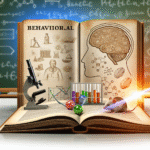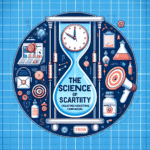Combatting Stigma: Discussing Neurodevelopmental Disorders and Promoting Effective Treatments
Introduction
In an age where mental health awareness is on the rise, neurodevelopmental disorders still face a hefty wall of stigma. Often misunderstood and mischaracterized, these conditions can lead to social isolation and misunderstanding, both for individuals affected and their families. Combatting Stigma: Discussing Neurodevelopmental Disorders and Promoting Effective Treatments has never been more critical as we strive to create a supportive environment that not only fosters acceptance but also promotes effective treatment options.
Imagine a world where individuals with neurodevelopmental disorders, like autism or ADHD, are not just tolerated but celebrated for their unique perspectives and contributions. This is the vision we aim to achieve. By unpacking the myths surrounding neurodevelopmental disorders and highlighting proven treatment strategies, we can shift the narrative from one of stigma to one of empowerment and understanding.
Understanding Neurodevelopmental Disorders
Neurodevelopmental disorders encompass a variety of conditions that impact the development of the nervous system, leading to challenges in personal, social, academic, and occupational functioning. Common disorders include Autism Spectrum Disorder (ASD), Attention-Deficit/Hyperactivity Disorder (ADHD), and learning disabilities.
What Are Neurodevelopmental Disorders?
| Disorder | Description | Prevalence |
|---|---|---|
| Autism Spectrum Disorder (ASD) | A spectrum of conditions characterized by challenges with social skills, repetitive behaviors, and communication. | 1 in 44 children (CDC, 2021) |
| Attention-Deficit/Hyperactivity Disorder (ADHD) | A condition marked by persistent inattention, hyperactivity, and impulsivity. | Approx. 5% of adults globally |
| Learning Disabilities | Conditions that affect one’s ability to read, write, speak, or perform mathematical calculations. | Varies, but approx. 2-10% of the population |
Understanding the nature of these disorders is the first step toward Combatting Stigma: Discussing Neurodevelopmental Disorders and Promoting Effective Treatments.
The Role of Stigma
Stigma surrounding neurodevelopmental disorders often arises from misunderstanding and misinformation. Many people view these disorders through a lens of negative stereotypes, perpetuating harmful narratives about those affected. This stigma can result in discrimination in various spheres, including education, employment, and social situations. As a result, individuals may feel discouraged from seeking help, isolating themselves even further.
Case Study: The Impact of Stigma on Employment
Consider Sarah, a vibrant young woman diagnosed with Autism Spectrum Disorder. While she possesses exceptional skills in data analysis, her job applications are often met with silence. Employers, influenced by stigma, frequently overlook her talent due to unfounded beliefs about her ability to fit into a conventional workplace. This case highlights how Combatting Stigma: Discussing Neurodevelopmental Disorders and Promoting Effective Treatments can encourage inclusive hiring practices, enabling individuals like Sarah to contribute their abilities meaningfully.
How Stigma Affects Relationships
The stigma surrounding neurodevelopmental disorders can strain familial and social relationships. Families may struggle with misunderstandings, leading to fractures in ties that could otherwise provide vital support. For instance, Mark, a teenager with ADHD, found himself increasingly isolated from his peers. His friends, influenced by misconceptions about ADHD, began to disengage, believing he was simply "lazy" or "disruptive."
This impacts the individual’s mental health, requiring us to address stigma as a community for collective healing and understanding.
Effective Treatments and Interventions
While the stigma is a significant barrier, effective treatments and interventions exist. It’s crucial to address this alongside full and open discussions regarding neurodevelopmental disorders.
Types of Treatments
- Behavioral Therapies: Strategies such as Cognitive Behavioral Therapy (CBT) help individuals develop coping mechanisms.
- Medication: For some, medications such as stimulants can effectively manage ADHD symptoms.
- Supportive Services: Speech therapy, occupational therapy, and academic support can significantly aid those affected.
Case Study: Real-World Application of Treatments
Using Sarah’s story as a reference, we can explore how targeted interventions changed her life. After engaging with occupational therapy designed for individuals on the autism spectrum, Sarah not only improved her social skills but also learned job-specific tasks that made her more marketable.
Her family participated in counseling, helping them understand her experiences and reduce stigma at home. Such transformations exemplify why Combatting Stigma: Discussing Neurodevelopmental Disorders and Promoting Effective Treatments is vital not just for individual recovery but for collective progress.
Integrative Approaches and Community Support
The Importance of Community
Building a strong community that understands and embraces neurodevelopmental disorders is a game-changer. Support groups can offer spaces for open dialogue, leading to shared experiences, resources, and education.
Case Study: Community Initiatives
Various organizations like the Autism Society and CHADD (Children and Adults with Attention-Deficit/Hyperactivity Disorder) have initiated community programs that educate the public about neurodevelopmental disorders. For example, they host events that allow families to connect and share their stories, fostering a community that is informed and empathetic.
| Organization | Mission | Programs Offered |
|---|---|---|
| Autism Society | Empower individuals and promote acceptance of autism. | Workshops, community events, advocacy |
| CHADD | Improve the lives of people affected by ADHD. | Educational resources, support groups |
The Role of Media and Education
Changing Narratives
Media representation plays a significant role in shaping public perception. Positive portrayals of characters with neurodevelopmental disorders can humanize these experiences, fostering empathy and understanding.
Educational Programs
Incorporating education about neurodevelopmental disorders in school curricula is essential. Teaching children about diversity can help prevent stigma from the ground up. Programs that include these topics can promote a culture of acceptance and understanding.
Measures for Combatting Stigma
Advocacy and Policy Change
Advocacy efforts focus on policy changes aimed at ensuring equitable treatment and greater awareness. They can drive initiatives that require schools and workplaces to embrace inclusive practices.
Encouraging Open Dialogue
Promoting open conversations is key to reducing stigma. Family members, friends, and educators should feel empowered to discuss neurodevelopmental disorders without fear of judgment.
The Role of Personal Stories
Sharing personal stories can be incredibly moving and effective in combating stigma. When individuals openly share their experiences, they humanize the condition, which can shift public perceptions dramatically.
Conclusion
As we work towards Combatting Stigma: Discussing Neurodevelopmental Disorders and Promoting Effective Treatments, it becomes clear that an integrative approach is essential. By understanding the disorders, challenging misconceptions, and advocating for those affected, we can build a world that values diversity and promotes effective treatments.
Remember, the journey is ongoing, and each small action contributes to a bigger change. Let us commit to creating a more inclusive environment where neurodevelopmental disorders are not just accepted but celebrated. Together, we can create a future where everyone has the opportunity to thrive.
FAQs
What are common neurodevelopmental disorders?
- Common disorders include Autism Spectrum Disorder (ASD), Attention-Deficit/Hyperactivity Disorder (ADHD), and Learning Disabilities.
How does stigma impact individuals with neurodevelopmental disorders?
- Stigma can lead to discrimination, social isolation, and reluctance to seek treatment.
What are effective treatment options available?
- Treatments include behavioral therapy, medication, and supportive services such as speech and occupational therapy.
How can communities support individuals with these disorders?
- Communities can form support groups, share informational resources, and foster inclusive environments.
- Why is it important to discuss neurodevelopmental disorders openly?
- Open discussions help reduce stigma, promote understanding, and create societal shifts that support those affected.
In a world that often views differences through a lens of bias, let’s turn that lens into one of empathy and understanding. Together, we can break down the barriers associated with neurodevelopmental disorders and cultivate an environment that uplifts and nurtures.












